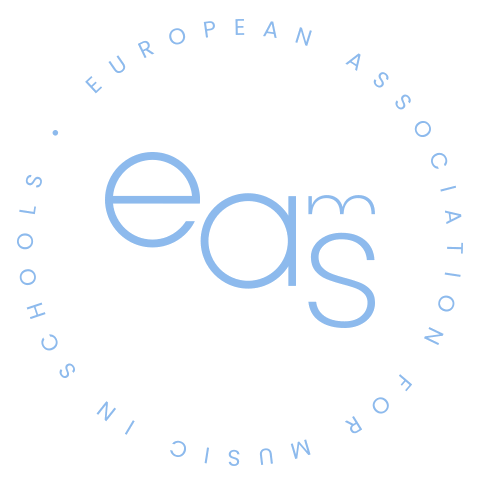Conference Agenda
Overview and details of the sessions of this conference. Please select a date or location to show only sessions at that day or location. Please select a single session for detailed view (with abstracts and downloads if available).
|
Session Overview |
| Session | ||
Papers - Emerging Technologies, Future Directions, Latest Findings
| ||
| Presentations | ||
Unlocking an unheard, methodological Voice in Music Education. Peer Instruction and Audience Response Systems in German Music Education University of Music Luebeck, Germany Audience Response Systems (ARS) are mostly software based ed-tech systems which gained widespread popularity and acceptance in both K-12 and higher education settings due to its implementation and research by Harvard physicist Eric Mazur in the early 1990s who used these tools in the context of peer instruction (Mazur 2017) which belongs to the methodological repertoire of active learning. The primary goal of peer instruction is its activating nature. It is usually characterized by (1) problem-based learning, (2) case study-based lessons, (3) its incorporation in a flipped classroom-framework, (4) group work and within those settings (5) especially partially accompanied debating. Peer instruction in combination with ARS aims at gradually moving teaching from the mode of lecturing to co-determined peer learning. A high number of scientific findings from the STEM area has shown significant improvement of student´s success regarding not only memorizing, but also understanding and applying the content learned if taught with peer instruction (Enders 2016). Therefor it is quite remarkable that until now there neither is a theoretical study for the field of music education, nor a serious, structured attempt of implementation in K-12 or higher education settings within German music education (though there are studies about other peer assisted concepts like peer assisted learning (Saccardi 2023) and peer tutoring (Fernández-Barros et al. 2022). This practice paper is an attempt to address this shortcoming by presenting »snapshots« and findings of several case studies related to peer instruction and ARS for music education. These case studies were carried out in 2024 as part of the EU- and German government funded joint project DigiProSMK in order to determine (1) whether and how ARS and PI can be integrated into music lessons in reality and (2) how beneficial these measures are. Post-digital Improvisation with Playtronica in Music Lessons University of Music Trossingen, Germany Improvisation is ingrained in the curricula of all types of schools. Nevertheless, there is still a need for concrete concepts, methods and design principles. Treß (2023) stated musical group improvisation as an important practice with educational impact across various areas and cultural practices. Moreover, improvisation could play a central role in contexts of supporting creative initiatives (Züchner et al., 2018). This practice-paper will therefore present a case study focusing on group improvisation processes in music lessons in German schools using Playtron and TouchMe (=Playtronica), two sensory devices equipped with MIDI functionality. Combined with digital consumer products they enable sound triggering, connected to conductive everyday items or the human body. The target group consists of primary and secondary school pupils (grades 3-6), considering the general openness and less-determined characteristics of that age group (Gembris & Schellberg, 2007). The case study follows a Design-Based-Research approach (McKenny & Reeves, 2019) to develop a teaching-and-learning-design through iterative cycles integrating digital-didactic models, such as SEPACK.digital (Frederking, 2022). The designed forms of improvisational contexts enable easy access to experiment with non-conventional musical instruments (Niediek & Gerland, 2022) in various musical settings for heterogeneous groups and facilitate opportunities for increased participation of pupils through creating their own setups. Free forms of improvisation (e.g. jam sessions) could serve as starting points for integrating common approaches to music-making (songwriting, inventing music) into music lessons. Improvisational experiences support pupils` ability to play by ear, to develop problem-solving strategies (Züchner et al., 2018) fostering their understanding of music through group improvisation processes (Unger-Rudroff, 2024) finding one´s own individual voice (EAS, 2025). Focussing the conference theme, this reveals the potential for shaping an inclusive and dynamic space for design and development. To further illustrate these opportunities, we present concrete video examples, highlighting the didactic insights gained from the ongoing design processes. Exploring, Music Making, and Learning in the "Teacher Soundlab" – An Evaluative Interview Study on Specific Music and Learning Experiences within an Open Space Concept Rostock University of Music and Drama As part of the DigiProSMK project, we are developing evidence-based training concepts for music teachers in the use of digital media, in accordance with the funding guidelines of the BMBF and the nationwide network “lernen:digital”. One of these formats, the Teacher Soundlab, is designed as a deliberately low-threshold opportunity for teachers to gain hands-on musical experience with digital sound generators in real musical situations. The Teacher Soundlab follows the core idea of consciously avoiding direct instruction by facilitators throughout the process. Instead, the concept adheres to key principles of Reggio pedagogy (Knauf, 2017, pp. 18–24), animative didactics (Opaschowski, 1977, 1996), and enabling pedagogy (Arnold, 2012; Arnold et al., 2014; Arnold & Schön, 2019). Participants in the Teacher Soundlab enter a carefully prepared, atmospherically designed "playground" that invites sound exploration and improvisational musical experimentation. Crucial to the success of the concept is the voluntariness and autonomy of the participants (Deci & Ryan, 1993): the playground can be entered and exited at their discretion. Participants decide whether to engage as listeners and/or players. As part of an accompanying research project, we are conducting an interview study with participants of the Teacher Soundlab, aiming to gain a deeper understanding of their specific listening and playing experiences within this exploration space. Our main areas of interest are:
In our presentation, we will share the preliminary results of the qualitative content analysis of the interviews conducted so far. | ||
